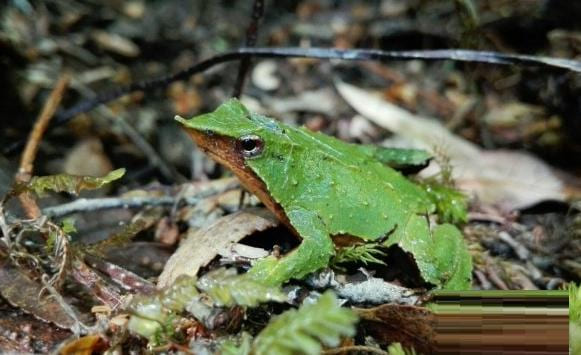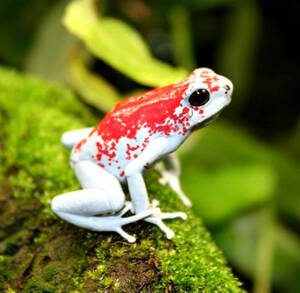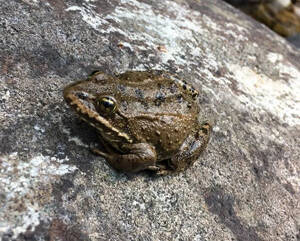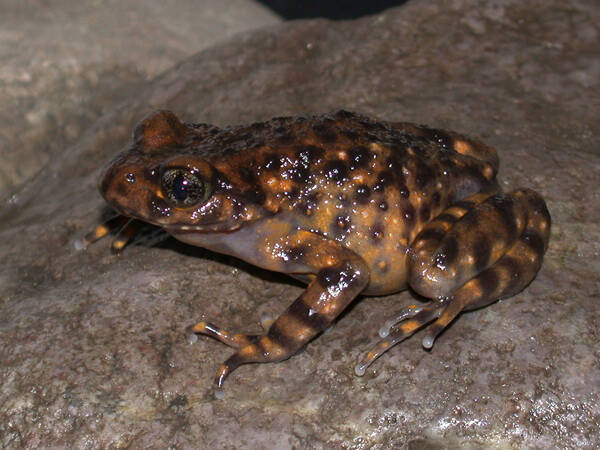Odorrana wuchuanensis
IUCN
LCBasic Information
Scientific classification
- name:Odorrana wuchuanensis
- Scientific Name:Odorrana wuchuanensis,Tadant
- Outline:Anura
- Family:Anura Ranidae Rana
Vital signs
- length:71-90mm
- Weight:-
- lifetime:-
Feature
It is an amphibian unique to China.
Distribution and Habitat
Endemic to China, distributed in Guizhou (Wuchuan), Hubei (Jianshi), and Guangxi (Huanjiang).
Lives in caves in mountainous areas at an altitude of about 700m, where the water in the Yin River flows slowly. Adult frogs live on the rock walls around the pond about 30m from the cave entrance, and the cave is almost completely dark.
Appearance
There are large warts on the back of the head and body; there are no dorsal folds; there are flat warts on the back, sides of the body, thighs and back of the buttocks; the skin on the ventral side is smooth. The back is green with black spots around the warts; there are multiple horizontal stripes of different shades on the limbs, and there are broken spots behind the thighs; the ventral side is covered with dark gray and yellow reticular patches.
Details
The stinking frog is a general term for frogs of the genus Rhacophoridae of the class Amphibia. There are about 50 known stinking frogs in the world, 30 of which are known in China. They are mainly distributed in the south of the Qinling Mountains. When the stinking frog is stimulated, the glands on the skin will secrete a strong odor, hence the name. The stinking frog lives in dark caves all its life. The "Wuchuan stinking frog" is a large karst cave frog unique to China.
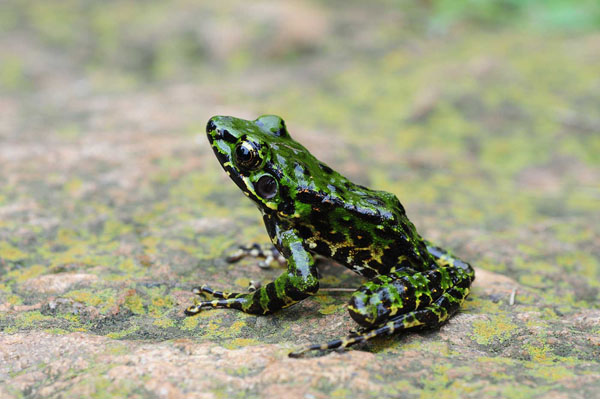
The frog lives in a karst cave in a mountainous area at an altitude of about 700 m. There is a Yin River flowing out of the cave, and the water flows slowly. Adult frogs live on the rock walls around the pond about 30 122 meters away from the cave entrance, and the cave is almost completely dark. When disturbed, the frog jumped into the water and swam under the deep water rocks. The breeding season may be from May to August, and tadpoles can be seen from June to August. The female frog (body length 86.0 mm) dissected on July 6 had 348 eggs in its abdomen.
The first issue of "National Geographic China" magazine in 2009 published the article "Searching for the Mysterious Cave Frog--Wuchuan Stinking Frog", which for the first time revealed a corner of the secret cave life of Wuchuan Stinking Frog. At the same time, scientific and technological workers announced that "Wuchuan Stinking Frog" has 5 distribution points.
Stinking frogs are an important transitional type group in the evolution from true frogs to water frogs in the family Ranidae. Wuchuan Stinking Frog is a large karst cave frog unique to China, distributed only in Guizhou. They probably live in dark caves all their lives. Since its naming, its related information is very rare. Chinese scientists collected this species in 1978, published it in 1983 and named it "Wuchuan Stink Frog". In the nearly 30 years since then, the scientific community has made almost no progress in understanding this species. It is rare and is one of the eight most endangered amphibians in my country. The IUCN (International Union for Conservation of Nature) lists the endangerment level of this species as critically endangered (CR). The relevant information of Wuchuan Stink Frog is very rare.
Listed in the second level of the "List of National Key Protected Wildlife in China".

